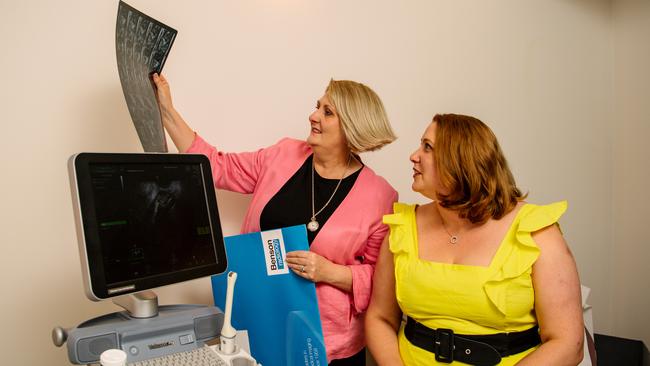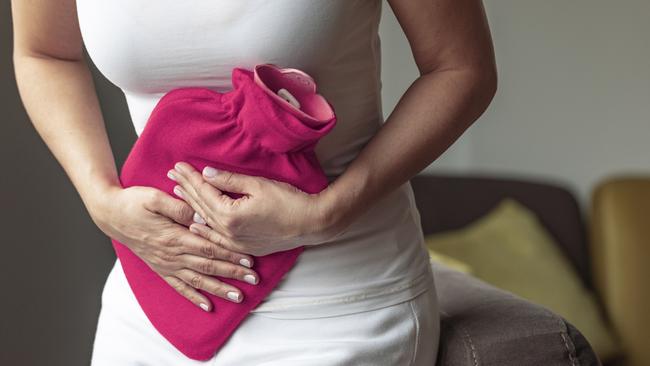University of Adelaide using machine learning for endometriosis diagnosis
Adelaide researchers hope local women and technology will help them find an easier way to diagnose a notoriously common problem.

SA News
Don't miss out on the headlines from SA News. Followed categories will be added to My News.
Adelaide researchers are working on a less invasive way to diagnose endometriosis and prevent keyhole surgery.
Experts in reproductive health at the Robinson Research Institute are working with the Australian Institute for Machine Learning to teach computers how to search scans for signs of the disease.
As University of Adelaide Associate Professor Louise Hull explains, gynaecologists with extra training have begun using ultrasound scans to detect endometriosis but these specialist skills are rare.
Some surgeons also use MRI (magnetic resonance imaging) scans to plan their operations.
But artificial intelligence has the potential to combine the two, giving doctors access to information that has never been available before.
“We’re hoping we can give them a platform, another way of looking, that’s digital,” she said. “And then if there’s something coming up they can refer to a specialist, but it just allows more accessibility, we’re really hoping that it would be something that, anyone could download their scans and MRIs onto, and get some kind of an answer.”
Endometriosis is the abnormal growth of cells where tissue similar to that which normally lines the uterus grows outside the uterus, often on the ovaries and fallopian tubes.
Having spent decades searching for answers, Libby Trainor-Parker, 43, says she’s excited about the technology’s potential to save many women from the pain and suffering including mental anguish that she’s had to endure.
“I was having symptoms when I was 14, and was not diagnosed until I was 36, so that‘s a long, long time to be going to doctors and being misdiagnosed with all sorts of things,” she said.
“If it was as easy as having a scan, rather than diagnostic surgery, that would be something that doctors would probably prefer, so diagnosis would be a lot quicker.”
So far, using a diagnostic dataset as a training sample, Professor Gustavo Carneiro has built a computer program that can read specialist scans and recognise the imaging markers of endometriosis.
These can include lesions where tissues of the bowel and uterus have become stuck together, rather than sliding past each other.
The diagnostic accuracy is now approaching that of a specialist doctor and will tend to improve over time.
“Machine learning is an iterative process,” Professor Carneiro said.
“As you give more and more training samples, the accuracy of the system improves.”
The University’s Robinson Research Institute is calling for volunteers to take part in the next phase of the study. Email: endostudy@adelaide.edu.au or phone 0450 534 950 if you have had (or will have) gynaecological scans, or will have diagnostic surgery and want to be involved in this research.

COMMON CONDITION
One in ten women experience endometriosis, which occurs when some of the tissue similar to the lining of the uterus (womb), called the endometrium, grows outside of the uterus.
University of Adelaide Associate Professor Louise Hull says the treatment depends on the symptoms, which can be many and varied.
“We think that the triggering event is when you get a period, the tissue breaks down and leaves your body, but in endometriosis, the tissue breaks down, and the immune system has to come and remove the cells, and that causes some inflammation and pain and swelling and bloating.
“Now once that happens, a nerve in your back, called the dorsal root ganglion gets activated. And that then can cause sensitisation of all the pelvic organs, so people can get bladder pain, bowel pain, back pain or pain with intercourse. And they can also have the muscles of the pelvic floor spasm, and that gives people stabbing pain.
“And then when your brain gets sensitised as well, and that’s where you get headaches and fatigue and vomiting and low mood. And so you have to unpick all those symptoms.”
For stabbing pain, physiotherapy is often the best option. For bladder pain, you might need to you know get some neurological therapy, for bowel pain you might need some dietary control, so different pains need different things.
Surgery tries to remove the triggering event.

